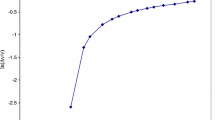Based on a variety of case histories of site investigations, including extensive bore hole data, laboratory testing and geophysical prospecting at more than 550 construction sites, an empirical formulation is proposed for the rapid determination of allowable bearing pressure of shallow foundations. The proposed expression corroborates consistently with the results of the classical theory and is proven to be rapid and reliable. Plate load tests have also been carried out at three different sites to further confirm the validity of the proposed method. It consists of only two soil parameters, namely, the in situ measured shear wave velocity and the unit weight. The unit weight may also be determined with sufficient accuracy by means of another empirical expression proposed, using the P-wave velocity. It is indicated that once the shear and P-wave velocities are measured in situ by an appropriate geophysical survey, the allowable bearing pressure as well as the coefficient of subgrade reaction and many other elasticity parameters may be determined rapidly and reliably, not only for soils but also for rocks.
Similar content being viewed by others
References
Schulze W.E., "Grundbau," Technical University of Istanbul, Issue 48, No DK624-15, Ucler Printing House, Istanbul, Turkey, 1943.
Coates D.F. Rock Mechanics Principles: Mines Branch Monographs, No. 874, 1970.
Hardin B. O. and Black W.L., Vibration modulus of normally consolidated clays, J. Soil Mech. Found. Div., ASCE, Vol.94, No. SM2, pp.353–369, 1968.
Hardin B.O. and Drnevich V.P., Shear modulus and damping in soils. J. Soil Mech. Found. Div. ASCE, Vol. 98, No. SM7, pp.667–692, 1972.
Ohkubo T. and Terasaki A., Physical property and seismic wave velocity of Rocks. OYO Corporation, Japan, 1976.
Imai T. and Yoshimura M., The relation of mechanical properties of soils to P and S-Wave velocities for soil ground in Japan. Urana Research Institue, OYO Corporation, 1976.
Tatham R.H., Vp /Vs and lithology. Geophysics, 47:336-344, 1982.
Willkens R., Simmons G. & Caruso, L. The ration Vp /Vs as a discriminant of composition for siliceous limestones. Geophysics, 49(11) 1850–1860, 1984.
Phillips D. E., Han D. H. & Zoback M. D., Empirical relationships among seismic velocity, effective pressure, porosity and clay content in sandstone. Geophysics, 54:(1) 82–89, 1989.
Keceli A. D., Determination of bearing capacity of soils by means of seismic methods, Geoph. J., Ankara, Turkey, 4, 83–92, 1990.
Jongmans D., The application of seismic methods for dynamic characterization of soils. Bull. Int. Assoc. Eng. Geol. 46:63–69, 1992.
Sully J. P. & Campanella R.G., Evaluation of in situ anisotropy from crosshole and downhole shear wave velocities measurements. Geotechnique, 45(2):267–282, 1995.
Pyrak-Nolte L. J., Roy S. & Mullenbach B., Interface waves propagated along a fracture. J. Appl. Geoph., 35:79–87, 1996.
Campanella R.G. and Stewart W.P., "Seismic cone analysis using digital signal processing for dynamic site characterization," Can. Geotech. J., Vol.29, No.3, June 1992, pp.477–486, 1992.
Butcher A.P. and Powell J.J., Practical considerations for field geophysical techniques to used assess ground stiffness. Proc. Int. Conf. on Advances in Site Investigation Practice, ICE London, March 1995, pp 701–714.
Abd El-Rahman M.M, Setto I., and El-Werr A., Inferring mechanical properties of the foundation material from geophysical measurements. Egyptian Geophysical Society, Proc. of the 9th Annual Meeting, pp. 206–228, 1992.
IRTP, ISSMGE Technical Committee TC16 Ground Property Characterization from In-situ Testing, International Reference Test Procedure (IRTP) for the Cone Penetration Test (CPT) and the Cone Penetration Test with pore pressure (CPTU). Proc. XIIth ECSMGE Amsterdam. Balkema. pp 2195–2222, 1999.
Sieffert J. G. and Bay-Gress Ch., Comparison of the European bearing capacity calculation methods for shallow foundations. Geotech. Eng., Vol. 143, pp. 65–74, England, 2000.
Turker E., Computation of ground bearing capacity from shear wave velocity, Continuum Models and Discrete Systems, Eds. D. Bergman, et. al., Netherlands, pp. 173–180, 2004.
Massarsch K. R., Deformation properties of fine-grained soils from seismic tests. Keynote lecture, Int. Conf. on Site Characterization, ISC'2, 19-22 Sept. 2004, Porto, 133–146, 2004.
Tezcan S. S., Ozdemir Z., and Keceli A., Allowable bearing capacity of shallow foundations based on shear wave velocity, J. Geotech.Geol. Eng., 24: pp. 203-218, DOI 10.1007/s.10706-004-1748-4, Netherlands, Springer, www.springerlink.com, 2006.
Stokoe K. H. and Woods R.D., Insitu shear wave velocity by cross-hole method, J. Soil Mech. Found. Div., ASCE, Vol. 98, No.SM5, pp.443–460, 1972.
Tezcan S. S., Erden S. M. and Durgunoglu H. T., Insitu measurement of shear wave velocity at Bogazici University Campus, Proc. of the International Conference on Soil Mechanics and Foundation Engineering, Vol. 2, April 1975, pp. 157–164, Istanbul Technical University.
Butcher A.P., Campanella R.G., Kaynia A.M., and Massarsch K. R., Seismic cone downhole procedure to measure shear wave velocity. A guideline prepared by ISSMGE TC10: Geophysical Testing in Geotechnical Engineering. Proc. of the XVIth International Conference on Soil Mechanics and Geotechnical Engineering, May 2006, 5p., Osaka, Japan.
Terzaghi K., and Peck R.B., Soil Mechanics in Engineering Practice. 2nd ed., Wiley, London, 1976.
Richart F.E., Hall J.R., and Woofs R.D. Vibrations of Soils and Foundations, Prentice-Hall, Englewood Cliffs, N.J., 1970.
Kramer L.K., Geotechnical Earthquake Engineering, Prentice-Hall international Series in Civil Engineering Mechanics, Upper Saddle River, N.J., USA, 1996.
Santamarina J.C., Klein A. K., and Fam M.A., Soils and Waves, Wiley, New York, N.Y., USA, 2001.
Hunt R.E., Geotechnical Engineering Investigation Manual, McGraw-Hill, New York, N.Y., 1984.
Bieniawski Z.T., Engineering Rock Mass Classification, Wiley-Interscience, New York, NY, USA, 1979.
Author information
Authors and Affiliations
Additional information
Translated from Osnovaniya, Fundamenty i Mekhanika Gruntov, No. 4, pp. 19-23, July-August, 2010.
Rights and permissions
About this article
Cite this article
Tezcan, S.S., Keceli, A. & Ozdemir, Z. Allowable bearing pressure in soils and rocks through dynamic wave velocities. Soil Mech Found Eng 47, 143–152 (2010). https://doi.org/10.1007/s11204-010-9102-8
Published:
Issue Date:
DOI: https://doi.org/10.1007/s11204-010-9102-8




